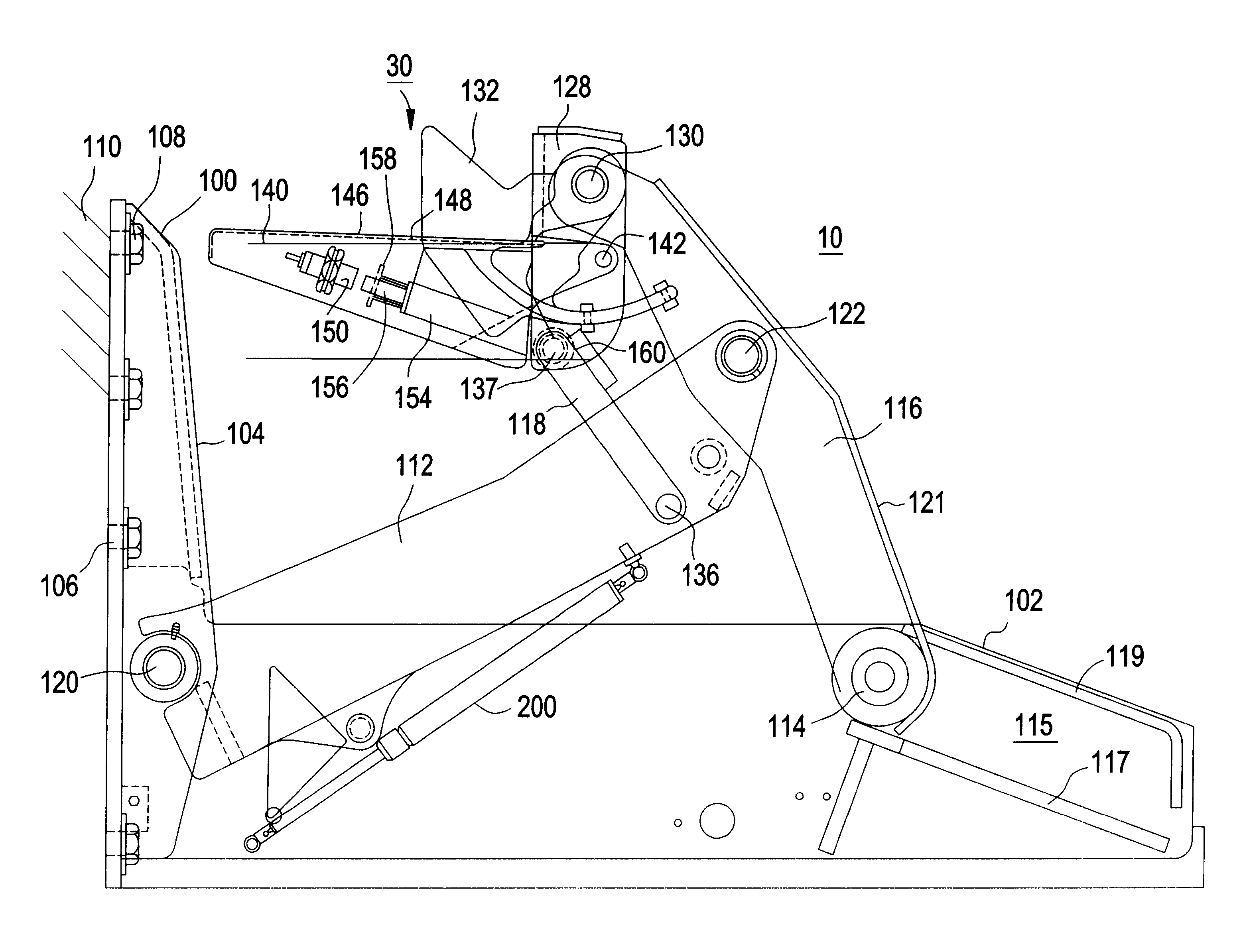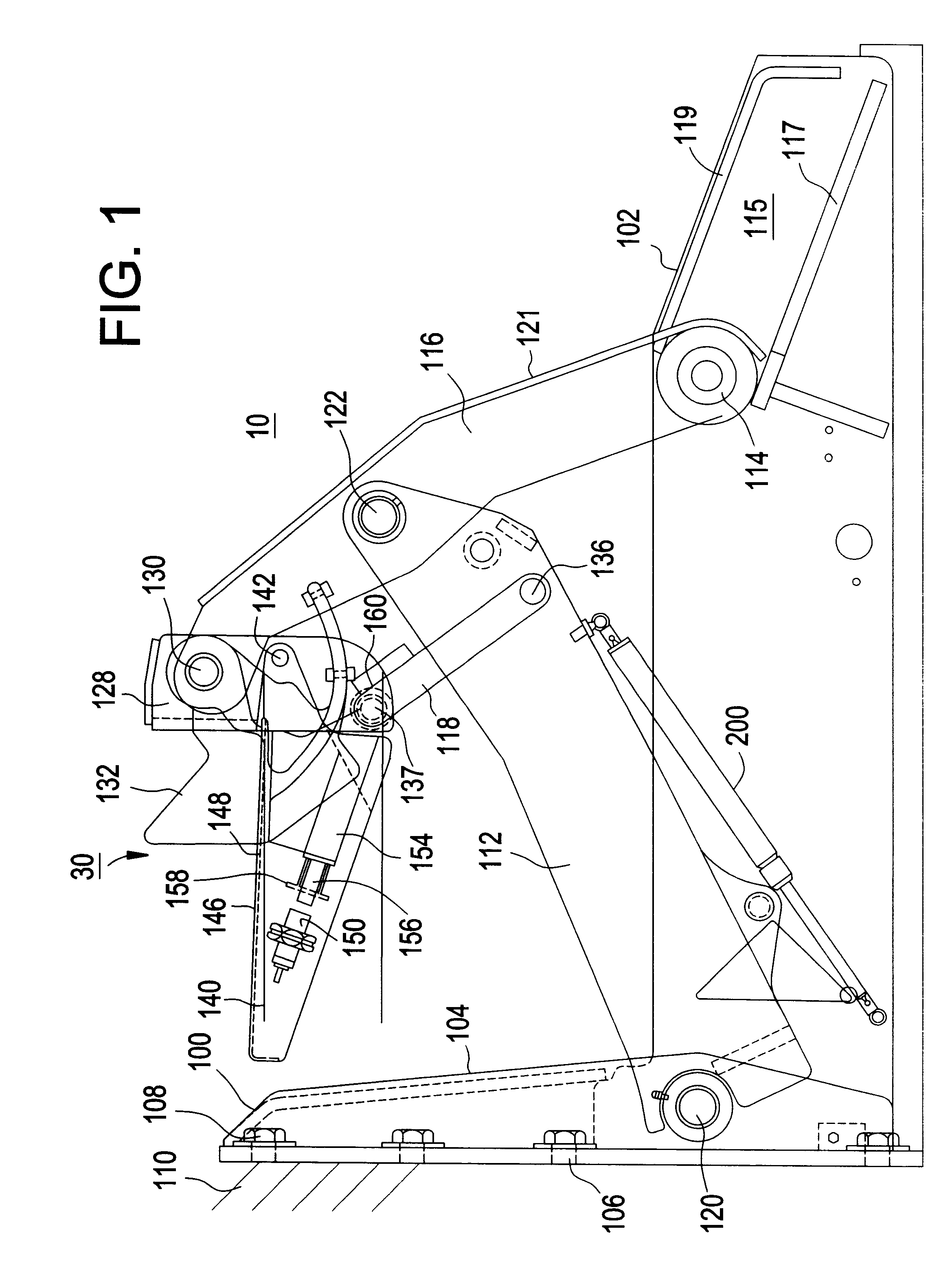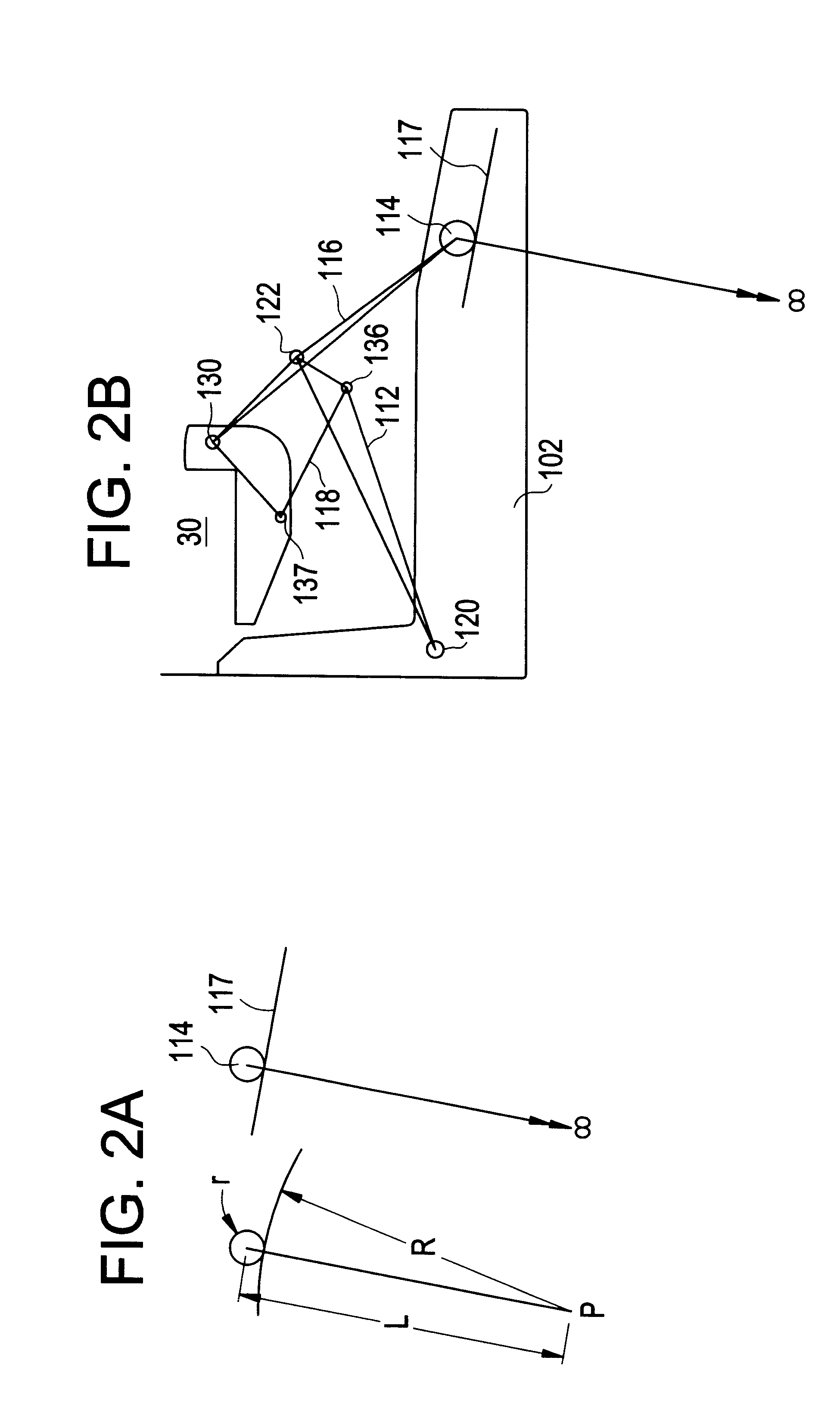Low profile vehicle restraint
a vehicle restraint and low-profile technology, applied in domestic applications, loading/unloading, storage devices, etc., can solve the problems of not allowing the restraint, disengagement, and icc of the vehicle, and the loading dock area and the rear end of the trailer can be very harsh environments, so as to minimize the degree and extend the operating range
- Summary
- Abstract
- Description
- Claims
- Application Information
AI Technical Summary
Benefits of technology
Problems solved by technology
Method used
Image
Examples
Embodiment Construction
Referring now to FIG. 1, a vehicle restraint 10 is positioned on the driveway 1 and secured to a dock wall.
A frame 100 includes a housing 102 and a back-frame 104. The back-frame has a series of holes 106 with anchor bolts 108 to facilitate mounting to the wall 110 of a loading dock. While not illustrated, the device may be ground mounted by the use of legs attached to the bottom of the housing 102.
The linkage of this device will now be described. It is a departure from the 4-bar linkage of the Serco VR restraint, as described in U.S. Pat. No. 5,120,181. The linkage comprises a main arm, 112, an upper arm 116 and a hook strut 118. The main arm 112 is pivotally coupled to the frame at pivot pin 120. While FIG. 1 illustrates in side view one arm 112, the main arm comprises two such arms mounted to pivot pin 120 and attached to each side of the upper arm 116 at pin 122 as illustrated in FIG. 3. This configuration differs from the four-bar linkage of the prior art by the elimination of ...
PUM
 Login to View More
Login to View More Abstract
Description
Claims
Application Information
 Login to View More
Login to View More - R&D
- Intellectual Property
- Life Sciences
- Materials
- Tech Scout
- Unparalleled Data Quality
- Higher Quality Content
- 60% Fewer Hallucinations
Browse by: Latest US Patents, China's latest patents, Technical Efficacy Thesaurus, Application Domain, Technology Topic, Popular Technical Reports.
© 2025 PatSnap. All rights reserved.Legal|Privacy policy|Modern Slavery Act Transparency Statement|Sitemap|About US| Contact US: help@patsnap.com



